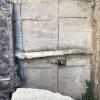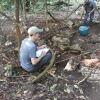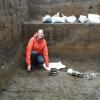Pompeii Artifact Life History Project (PALHIP)
The Pompeii Artifact Life History Project (PALHIP) carried out its tenth and final fieldwork season at Pompeii (Napoli), Italy, between June 30 and July 27, 2024.
The PALHIP team, which consisted of four persons (Ted Peña, Aaron Brown, Susanna Faas-Bush, Francesca LaPasta), completed its description of the portable artifacts recovered in the various residences in the block identified as Regio I, Insula 11 (I.11 in the Pompeii address system), expanding its coverage to include the items from residences I.11.11, I.11.12, I.11.13, I.11.14, I.11.15.9 and I.11.16.









